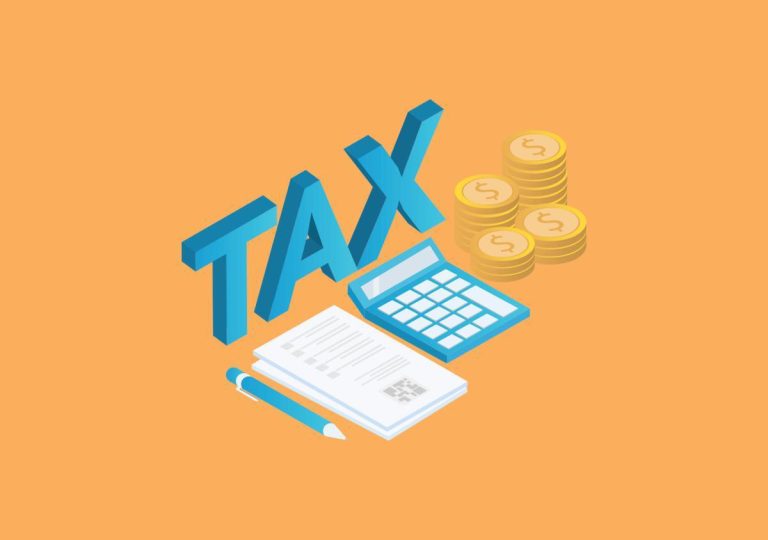This article reviews some recent academic research in transfer pricing (TP), with a particular focus on Mainland China, to shed light on its implications to practice. Put differently, what can we, as CPAs or tax practitioners, learn from the latest academic research in TP? In summary, the academic research currently being produced by scholars can have an increased impact on policy and have potential implications for practice.
It has often been perceived that scholarly research findings have little practical implications, because practitioners seldom take them into consideration. There are three reasons for this perception. Firstly, academic research in TP tends to examine broad-based issues, whereas practice research examines company-specific issues relevant to the professional community. Secondly, unlike practice research reports, which are written in layman’s terms and are targeted at professional readership, academic research papers are written in a relatively inaccessible style and targeted towards academic audiences. Finally, academia has not communicated its research findings to the public well enough through means other than scholarly journals. Nevertheless, both professional and academic research are complementary and can be informative to each other.
TP is an accounting practice that represents the price that one division in a company charges another division for the provision of goods, services, and loans. Companies undertake real activities (e.g. increasing research and development and overhead charges, adjusting the interest rate for intracompany loans, and setting up shell companies in tax havens) or simply change accounting methods or estimates (e.g. changing the common cost sharing and allocation formulas) to transfer prices or profits. They do these for both tax and non-tax reasons. Academic research tends to focus on TP for tax purposes. Tax-based incentives to transfer profits have generally been studied in two different contexts: TP between affiliated companies in different jurisdictions (i.e. cross-border TP) and between affiliated companies within a jurisdiction (i.e. domestic TP). Tax-induced TP has always been a hot topic for both corporations and tax authorities because it affects corporate cash flows and government revenues. Relative to developed economies, TP abuses occur more often in developing countries such as Mainland China where fair value or arm’s length prices are difficult to obtain (particularly for intangible assets) and infrastructure (e.g. workforce and experience) and enforcement resources to tackle TP abuses are lacking. Therefore, countries across the world are finding solutions to avoid base erosion and profit shifting by multinational corporations.
Both countrywide and company-specific factors affect companies’ TP decisions. Country-level institutions such as culture, politics, legal system, and regulations and its enforcement shape a company’s specific incentives to transfer profits across member companies. For example, increased tax authority monitoring will deter income shifting through intragroup transfers. Company-specific factors such as managerial reporting incentives, company size, profitability, and ownership also affect a company’s TP decisions. For example, division managers will try to set transfer prices that will maximize their profits for performance evaluation and compensation purposes, despite the need for them to pay more taxes. It is important that when analysing TP transactions, we do not lose sight of the forest (national institutional environment) for the trees (company characteristics).
Hussein et al. (The International Journal of Accounting 2017) examine whether informal institutions like culture influence TP negotiation between division managers. When managers from different cultures vary in their conceptions of fairness, they may not easily agree on negotiated transfer prices that could be considered “fair” by all parties. They find that when the external market price is significantly different from the equal-profit-price (i.e. the price dividing profits equally), Americans (with a small power distance culture) negotiating with each other make final offers closer to the equal-profits price than to the external market price. Conversely, when the Chinese negotiate with each other, they make final offers closer to the external market price than to the equal-profit-price. In other words, when the external market price significantly favours one party over another, Americans tend to agree on relatively equal distributions of profit as a fair outcome. However, the Chinese tend to accept the external market price as the “fair” transfer price and agree on relatively unequal distributions of profit. Given the findings, it is advisable that companies should emphasize cultural awareness in training divisional managers and modify their negotiation processes to reflect cultural differences. Importantly, this study strengthens the practical relevance of managerial accounting literature.
Kim and Zhang (Contemporary Accounting Research 2016) and Lin et al. (Contemporary Accounting Research 2018) examine whether informal institutions such as corporate political ties influence the behaviour of companies and tax authorities. The former study finds that politically connected companies are more tax aggressive than their non-connected counterparts because of their lower expected cost of tax enforcement and better information about tax law and enforcement changes. To examine whether ties between the board of directors and politicians weaken the effectiveness of government enforcement against tax-induced TP, Lin et al. use a dataset to measure the level of tax enforcement across all provinces in Mainland China. They find that the deterrent effect where a company’s tax-induced income transfers will be detected and lead to heavy penalties is significantly undermined if board members are politically connected, suggesting that board’s political ties are a significant challenge to the effective enforcement of tax compliance in a politically controlled economy. A policy implication of this study is that as the administrative effectiveness of tax systems in developing countries to protect revenues is influenced by both formal (e.g. the justice system and tax enforcement) and informal (e.g. personal relationships and social networks) institutions, successful tax reform should not be limited to strengthening the tax administration within the revenue system. Reforms must also encompass a country’s political and business environments, including government-business relations, the political economy of regulatory agencies, and the incentives and behaviour of different actors within and outside the tax system. To minimize litigation and reputation risk, tax practitioners should understand the enforcement behaviour of tax authorities as government scrutiny appears to vary according to geography and company attributes.
TP is a function of the spread in tax rates among member companies and the size of price transfers. The larger the spread and the size, the greater the tax savings from the transfer. This means companies have little tax incentives to transfer prices if such a rate spread does not exist; or even if it does, group companies will have little or no price transfers. Indeed, Shevlin et al. (Journal of the American Taxation Association 2015) find that the magnitude of income shifting is increasing in the tax rate spread of the subsidiaries within an affiliated group. Lin et al. (Journal of International Financial Management and Accounting 2021) also find that business group affiliation weakens the sensitivity of income tax expense to pretax income. Several studies examine the effect of tax rate changes on the company’s incentive to shift income. For example, Lo et al. (Journal of the American Taxation Association 2010) use the relative gross profit ratios of related and unrelated-party transactions to measure TP strategies. They find evidence that TP is used to increase a listed companies’ profits as the corporate income tax rate decreases and decrease a listed company’s profits as the percentage of shares owned by the government increases. Wong et al. (Journal of International Financial Management and Accounting 2015) study whether companies manage their earnings, via TP, to tradeoff various incentives when tax rates increase and find that when anticipating a tax rate increase, companies increase their taxable income in the current year without simultaneously increasing book income, suggesting they are concerned about the detection risk of aggressive financial reporting. These studies have implications to policy and practice. Policymakers and regulators can gain more insights on companies’ reactions to anticipated tax rate increases, and this will help them devise a tax policy that fits the financial needs of the government. The results also have implications for accounting firms, which often face conflicting demands to give tax minimization advice on the one hand and to detect material cases of client earnings management on the other.
Company attributes and reporting incentives also shape TP decisions. For example, relative to public companies, private companies shift more taxable income from a higher- to a lower-tax year because they face less pressure to alleviate financial reporting constraints (see Lin et al. (Journal of the American Taxation Association 2014)). To allocate profits between divisions in a manner that aligns their interests with the interests of the company, many organizations grant division managers a significant degree of autonomy to negotiate transfer prices. Chan et al. (Journal of the American Taxation Association 2006) find that companies that have autonomy in setting transfer prices have smaller tax audit adjustments compared to those that have their transfer transactions dictated by parent companies with more concerns about company-wide profits. Lo etal. (Journal of Corporate Finance 2010) investigate whether good governance structures help constrain companies’ TP manipulations in Mainland China. They find that well-governed companies (e.g. companies with independent directors and knowledgeable audit committee members) are less associated with TP abuses. Results of these two studies are potentially useful in identifying the type of companies that are more likely to be tax avoiders, and thus may help tax authorities to allocate their auditing efforts in the future. When selecting targets for a TP audit, tax authorities should not only look at the financial statement data (e.g. profit margin, profit patterns, and sales trends), but also consider non-financial information such as organizational and governance structures and incentive systems of the company. When formulating TP policies, multinational corporations should be aware that their subsidiaries would encounter more tax non-compliance problems and face higher risks of tax examination if subsidiaries are not involved or given no autonomy in setting transfer prices.
In summary, companies’ decisions to transfer prices domestically or internationally are shaped by a country’s formal and informal institutions and by their reporting incentives. Empirical results from the studies previously mentioned suggest that while tax authority enforcement can deter tax-induced income transfers, the enforcement behaviour is weakened by the presence of a politically connected board. Studies also find that companies in Mainland China have a tax incentive to transfer income across periods and between affiliated companies within the group. It is evident that the following company characteristics are associated with a higher likelihood of engaging in income transfers for tax purposes: 1) private, non-state companies; 2) subsidiary companies with their TP decisions dictated by the parent; 3) large tax rate range between member companies; 4) poorly governed companies; and 5) companies headquartered in regions with a weak tax enforcement.
Professional and academic research are complementary and should inform each other. To improve informativeness, scholars and practitioners should interact as extensively as possible. To increase the possibility that the academic tax research is both directly useful and effectively disseminated to policymakers and practitioners, it is suggested that academic research papers should integrate a discussion of the policy debate or practical problem into the manuscript, offer implications of the research results, and utilize various channels to increase the visibility of research findings to those interested in tax policy and practice. Channels include publishing academic research findings in professional journals and offering workshops to the professional community. Meanwhile, policymakers and practitioners can provide their insights and comments to academia on issues which need systemic empirical evidence. This will increase the impact of research on policy and practice.
This article was contributed by Kenny Lin, Professor at the Department of Accountancy at Lingnan University.
















